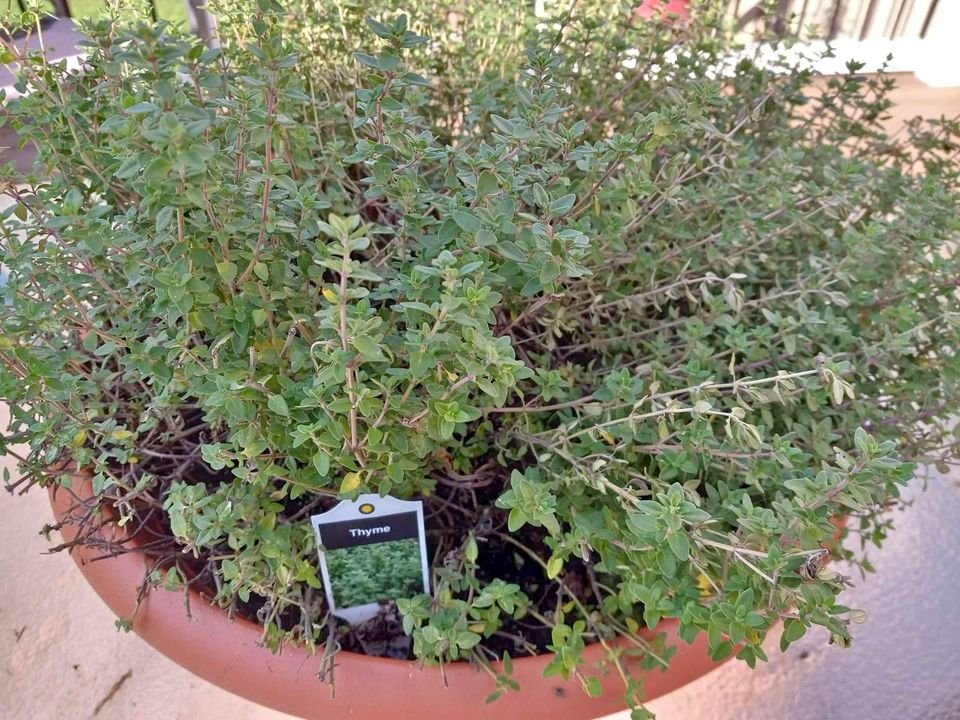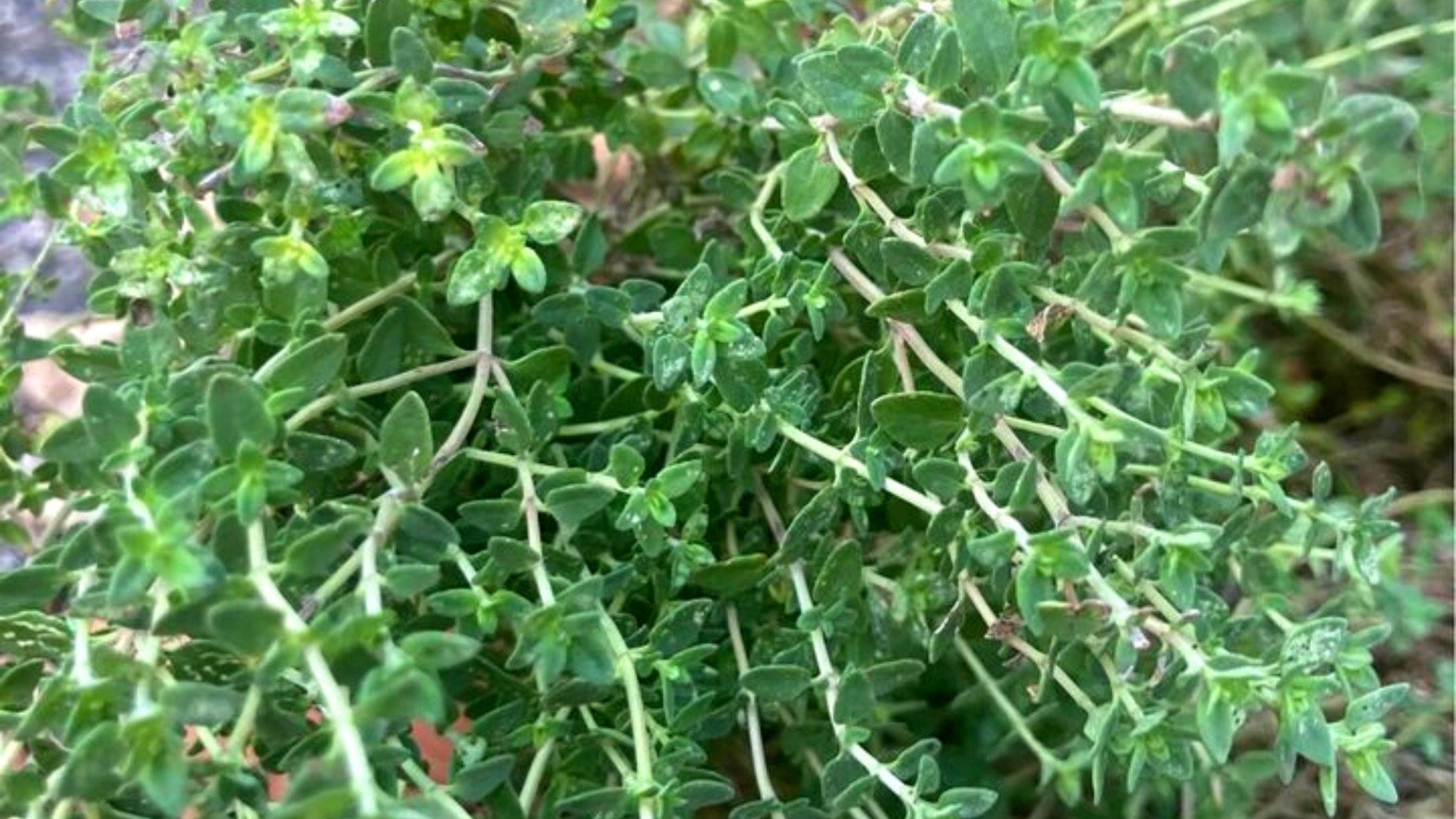Thyme plants are low-maintenance perennial herbs indigenous to Europe’s Mediterranean area and have adapted to its arid climate. Thyme plants typically have a short lifespan but can continue to produce leaves for use in cooking for around 5 to 6 years with great care.
Thyme plants need to have some of the same growth conditions as in their original Mediterranean climate; attention must be paid to the soil, watering, and light conditions. While thyme may grow in many climes with slight adjustments to the conditions, certain of the Mediterranean climate’s requirements are necessary for it to thrive elsewhere.
There are many ways to revive a thyme plant if it appears to be dying, but it is crucial to identify the root of the plant’s condition before trying to revive it.
Why Would a Thyme Plant Need Reviving?

The following are the most typical causes of thyme dying:
- Because of the soil’s constant moisture, thyme gets a fungal disease or root rot.
- Thyme is yellowing and drooping due to wet soils or an overabundance of nitrogen in the soil because of excess fertilizer.
- Thyme plant that is wilting, drying out, and becoming brown.
- Lack of sunlight or nutrients results in the slow development of leaves and foliage.
- Thyme drooping or growing slowly because it is in a tiny pot or because the pot’s base doesn’t have any drainage holes.
- The thyme plant needs to be revitalized after the winter.
Read on to learn how to address these issues so that your thyme plant recovers and produces fresh leaves with a strong flavor and aroma.
Thyme Plants Turning Yellow and Wilting
Because of their Mediterranean climate, thyme plants may thrive in sandy soil with low to moderate fertility. There will likely be a high concentration of nitrogen in the soil if it is nutrient-rich or if fertilizer has been applied. If you are growing thyme for culinary purposes, too much nitrogen may cause the plant to become leggy, sag, or wilt, and it will also lessen the flavor and aroma of the leaves.
As mentioned earlier, root rot is also frequently characterized by yellow leaves and a drooping look. To avoid this, plant (or transplant) thyme into a medium that drains well and allows the soil to dry out between waterings completely. Follow the instructions for thyme with root rot revival if the soil is persistently wet due to regular watering.
Reviving Thyme with Yellow Leaves with a Wilting Appearance
- You should cease fertilizing thyme if you have been doing so since it encourages excessive leaf growth with a poorer flavor and perfume.
- To increase drainage and balance the soil’s nutritional profile, move the thyme plant from the garden soil to another part of the garden or the pot to a new container and mix the soil with 30% sand or gravel.
- Trim down the thyme’s lanky or wilting growth for a more rounded look (do not cut into woody growth, as this will not grow back particularly well).
- Place the thyme plant in full sun and only water it when the soil has dried out slightly between waterings, at which point the thyme should start to grow again.
Thyme Plant with Root Rot
Thyme plants naturally grow in the Mediterranean region of Europe, where they have been bred to do well in full sun, intermittent rain or irrigation, well-draining sandy soils, and preferably in places with some breeze to lower humidity.
Due to the roots’ susceptibility to root rot and parasitic fungus in damp soils, thyme plants have evolved to become drought tolerant and require dry, well-draining soil conditions rather than rich soil or constantly moist compost.
Thyme plants need watering only once in two weeks in most regions when established and planted in suitable soil (added with sand for increased drainage) and once a week in hot weather if grown in pots.
Thyme plants are more susceptible to overwatering problems than underwatering because of their tolerance for dryness and their roots’ sensitivity to wet soils.
Revive a Dying Thyme Plant with Root Rot
- Reduce watering to once every two weeks if your thyme shows root rot. This will enable the soil to dry out a little between watering sessions.
- Remove anything that absorbs moisture, such as compost, leaf mold, or any other rich organic mulch, as thyme likes dryer soil.
- Examine the roots of the thyme plant after carefully pulling it out of the soil with a fork. With a clean pair of pruners, cut out the infected part of any roots that seem to be brown, squishy, or rotting and replace it with healthy growth. It is advisable to wipe the pruners with alcohol to limit the spread of the fungus to healthy growth that is otherwise present.
- Replant the thyme in fresh soil that has been improved with at least 30% horticultural grit or sand and 70% multipurpose compost (ideally in a pot). Throw away the old potting soil since it is the home of the fungus destroying the roots. To eradicate the fungus, apply an organic pesticide to garden soil.
Thyme Turning Brown and Dry
Even when given proper care, thyme, a perennial plant, sometimes only survives for 5 to 6 years. Compared to younger thyme plants, the development of older thyme plants tends to stall, producing fewer leaves with a weaker aroma and flavor.
Thyme leaves naturally start to turn brown and look dried up after five years, which is why collecting cuttings for propagation is so popular since it allows you to have a supply of thyme at a cheap cost and with little upkeep.
Thyme is regarded as cold hardy and can withstand a cold Winter with frost. However, a heavy frost or a late Spring frost might cause the plant to turn brown. Thyme also grows well in full sun, so if the plant is situated in a location with fewer than six hours of direct sunlight each day, brown leaves may indicate stress brought on by a lack of direct light. It could also be water sensitivity brought on by slow-draining soils or overwatering.
Revive Thyme that is Drying out
- Thyme has a limited lifespan, much like many other Mediterranean plants. Take cuttings to multiply thyme plants since doing so is more affordable and successful than starting thyme from seed.
- If thyme has been affected by frost, remove any damaged growth in the spring when it’s warmer since this encourages the regrowth of healthy new shoots. If there is a possibility of frost, avoid cutting away the growth since the incision from the cut may sustain further frost damage.
- Thyme should always be planted in full light. Thyme does not thrive in partial shadow, so place the pot in a sunny spot or move your thyme to a garden spot that receives more light. You may also consider trimming back any overhanging plants that may create shade.
Thyme Plant not Growing
Thyme plants are generally small herb plants that grow in dry, low-nutrient soils. As a result, they do not normally spread or grow fast. However, creeping thyme (Thymus serpyllum) does. However, if your thyme isn’t growing and appears ill in the spring or summer, there may be a problem with the growing environment.
Although thyme can continue to grow beyond four years, it naturally slows down, and there might be some dieback, with part of the leaves becoming brown and dried up. This is the thyme plant’s normal life span.
A lack of sunshine might hamper the leaves’ general growth rate, flavor, and aroma. Additionally, nearby plants may compete with the thyme for nutrients, water, light, air, and space, resulting in the thyme’s poor growth or death.
Small pots and containers naturally have less room for the roots to spread out, which might prevent your thyme from growing.
How to Revive Thyme Plants that are not Growing
- To give the plant’s roots the room they need to expand and access the moisture and nutrients it needs, plant thyme in a pot at least 12 inches across.
- For optimal growth and health, place thyme plants in full sun for at least six hours daily.
- To ensure that each thyme plant has enough water, sunlight, soil, and air, space the plants at least 18 inches apart. Thyme should be planted around 2-3 feet apart for optimal results in more humid conditions.
- Potentially with proper care, thyme plants can not live for very long. After the third year, the growth can decrease, and the plants may even die. Thyme may be easily and inexpensively propagated from branches in the first and second years.
Revive Thyme Plants after Winter

Common thyme (Thymus vulgaris), creeping thyme (Thymus serpyllum), and lemon thyme (Thymus citriodorus) are among the cold-hardy species of thyme that are frequently offered in shops and garden centers that may withstand a frost in winter and flourish the following year.
Suppose you reside in a region that is extremely cold or exposed area. In that case, you should cover your thyme plants in winter with something like a cloche. Better still, bring the pots inside until spring, as long as they are put in a sunny window and are watered once every four to six weeks during the dry winter months.
Outside Mediterranean conditions, thyme often grows yearly and preserves part of its leaves over the winter. However, some leaves may fall off naturally.
If there is any frost damage, remove the brown leaves in the spring after any danger of a severe frost has gone. Delay pruning until warmer weather because removing frost-damaged growth during cold weather makes the new wounds vulnerable to more harm.
Can Thyme Come Back to Life?
If the thyme plant’s roots are still strong, it could still be possible to revive it. Start by removing the ailing plant from the ground. The herb has a possibility of coming back to life if you spot white roots. A dying thyme plant can be saved by:
- Put new potting soil in the plant’s container.
- Ensure the plant gets maximum sunlight for 6 to 10 hours daily.
- Thyme needs watering every 10 to 15 days.
If your plant shows any sign of dying, act as soon as possible. Use our guidelines to ensure that your thyme is planted in well-drained, nutrient-rich soil and receives full sun every.
When is it Too Late to Revive a Thyme Plant?
Even though Thyme plants are perennial, there is still a limit to how long they can live. Thyme plants typically live for a maximum of 4-5 years. Your plant’s growth rate declining quickly and the stems turning woody are indications that it is getting old and needs to be replaced.
The leaves might then eventually start to dry out and turn completely brown. Even though a plant that is old and dying has no chance of recovery, you could decide to propagate your thyme and begin the development of a new plant.
Cutting a branch from your plant and planting it in moist soil are both simple methods for propagating thyme. Remove the middle and bottom leaves from the branch to improve oxygen flow and the likelihood of your new thyme plant thriving.
